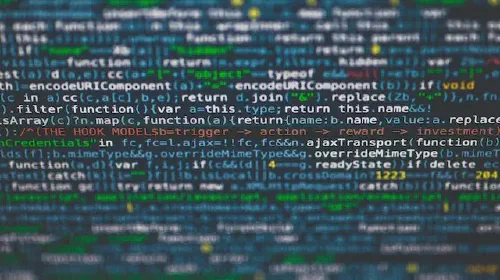What Is Polygon MATIC and How Does it Work?
Salomon Kisters
Feb 28, 2023This post may contain affiliate links. If you use these links to buy something we may earn a commission. Thanks!
Sandeep Nailwal, co-founder and chief operating officer of Matic Network, introduced Polygon Matic in 2017. The project was initially met with a largely positive response, with members of the blockchain and cryptocurrency communities applauding its potential to boost scalability and make it easier to create decentralized apps (dApps) on the Ethereum platform.
Polygon MATIC is a layer-2 scaling solution based on Ethereum that allows projects to scale their applications securely and without trusted third parties. It offers the same security, dependability, and scalability as the Ethereum mainnet while enabling developers to quickly deploy their Ethereum apps on the blockchain.
In order to scale their applications while preserving the advantages of the mainnet, developers can use Polygon Matic, which creates an abstraction layer between the mainnet and the application layer. The Polygon Network (previously known as Matic Network) powers the platform, which is a sidechain-based scaling solution that uses Plasma technology and cutting-edge Proof-of-Stake consensus to enable fast and low-cost transactions.
Why Did Matic Change its Name to Polygon?
To more accurately reflect its expanding range of services and its bigger picture, Polygon changed its name from Matic Network to Polygon in 2021. The platform’s objective is to create an open platform where developers may deploy and link their own Layer 2 solutions, and the new name is intended to reflect the “matrix of blockchain solutions” that the platform offers.
With Polygon, building and interacting with the Ethereum blockchain will be simple for developers, facilitating the creation of expansive networks and applications. The platform also offers a safe and economical means to expand Ethereum, assisting in the entire development of the digital economy. In the end, the new name is intended to reflect more accurately the platform’s goals and its expanding list of services.
Matic is not the first blockchain company whose name has changed over the course of its operations. The blockchain project Ethereum, which was once known as “Ethereum Classic,” is one example of a project that underwent a name change.
The reason for the move was that Ethereum Classic was connected to a hard split that happened after a hacker took advantage of a flaw in the code to steal more than $50 million worth of Ether. The team was able to remove itself from the incident’s negative connotations and establish a new, more positive brand identity by renaming the project Ethereum.
Another such example is that of Ripple, which was formerly known as “OpenCoin”. To develop a more consistent and identifiable corporate identity for its payment network, Ripple underwent a rebranding process. The modification was required to avoid confusion with Bitcoin, the most well-known cryptocurrency in the world.
How Does the PoS System Work on Polygon?
Although the fundamental concept of PoS hasn’t changed, Polygon employs it in a different way than other blockchain networks have in the past. The following are some ways that Polygon’s use of PoS differs from conventional PoS mechanism:
Selection of Validators
In a conventional PoS network, validators are selected at random based on their token holdings and willingness to take part in the consensus process. Validators in Polygon are selected based on their standing, track record, and holdings of staked tokens.
Staking Mechanism
To take part in the consensus process in a standard PoS network, validators must lock up a fixed number of tokens as collateral. The staking system in Polygon is more adaptable; users can stake any number of tokens and receive rewards based on the quantity invested.
Governance
Token holders in a typical PoS network have a voice in the network’s governance based on the number of tokens they hold. The governance structure in Polygon is more democratic, allowing all stakeholders an equal voice in decision-making.
Rewards for Validators
In a standard PoS network, validators are compensated according to the number of tokens they own and their involvement in the consensus procedure. In Polygon, validators are compensated according to how well they perform and how well their task is done, with underperforming validators receiving lower incentives.
Overall, the Polygon PoS mechanism has been changed to better meet the needs of the network and its users, even if it is still based on the same fundamental idea as traditional PoS. The validator selection, staking process, governance, incentives, and scalability are where the biggest distinctions are found.
What is Layer-2 Scaling on Ethereum?
For Ethereum, layer-2 scaling solutions enable more transactions to be processed off-chain before being added to the network in a single transaction. The goal of developing scaling solutions is to make the Ethereum blockchain more scalable so that it can support higher throughputs than are currently feasible.
The Ethereum mainnet can only process about 15 transactions per second (TPS). The TPS required is greater than a few thousand or tens of thousands of transactions if we want to use it to build large-scale applications.
Projects attempt to achieve this by introducing a variety of layer-2 protocols, which shift some of the burdens from the blockchain itself and into a different layer that may not require as much consensus or security requirements as on-chain; this allows us to significantly increase throughput in comparison to typical on-chain operations.
These days, Plasma and Optimistic Rollups, each of which have unique scalability benefits, are the most widely utilized layer-2 scaling solutions. In order for Plasma to function effectively, an operator must commit blocks onto an off-chain tree; these blocks contain a variety of data, including game states, payments, and so on.
All of this information is contained in Merkle roots, which can later be compared to one another inside root chains like Ethereum. Due to the drastically reduced security requirements, this enables us to use Poof-of-Work consensus from root chains while significantly increasing the speed inside Layer 2 Protocols.
This enables much faster block times without significantly compromising the decentralization/security guarantees associated with root chains like Ethereum itself.
Polygon’s Initial Exchange Offering (IEO)
Usually, blockchain-based projects go for ICOs (Initial Coin Offerings) to raise capital. However, Polygon used an Initial Exchange Offering (IEO). An Initial Exchange Offering (IEO) is a fundraising event that is conducted exclusively on a cryptocurrency exchange.
Companies will use this process to raise funds directly from investors who purchase tokens for the company’s project and receive their tokens in return. IEOs are seen as an improved form of ICOs, which have become highly regulated due to scams and fraudulent activities associated with them.
The IEO of Polygon was conducted from 24th to 25th April 2019. It was launched at $0.00263, and it sold 1.9 billion tokens, which amounts to 19% of the total supply. Since then, the ROI has been 472x, with an all-time high ROI of 1104x. The platform they chose for their IEO was Binance, and ever since, Polygon has had a strong relationship with Binance, with the company constantly launching campaigns on the exchange to promote their coins.
Apart from the IEO, Polygon also had a funding round. It was announced on February 7, 2022, and various companies like Sequoia Capital India, Galaxy, and Tiger Global Management invested in Polygon. The company managed to raise $450,000,000, and the funding round was considered successful.
Main Competitors of Polygon
Since its debut in 2021, Polygon has seen a fair amount of success. In terms of Decentralized Finance (DeFi) platforms, Polygon was the second-largest platform as of April 2021, according to DeFi Pulse, with over $3 billion in total value locked (TVL). This places it as the second-best DeFi platform, just below Uniswap.
Developers from all around the world actively use Polygon to build decentralized applications on Ethereum without having to worry about the scaling or security issues that come with mainnet transactions. Aavegotchi, which collected over $6 million for its NFT project through an initial DEX offering, is one of the most successful projects built on Polygon.
Other L2 systems like Optimism and Gnosis, as well as different interoperability protocols like RenVM and Cosmos SDK/Tendermint Core, are the major rivals of Polygon. These systems differ from Polygon in that they employ various scaling strategies: Gnosis relies on side chains for scalability, RenVM employs custodial transfers across blockchains for interoperability, and Optimism’s zkRollups are based on zk-SNARKs.
Some of these rivals also don’t support the more sophisticated features included in Polygon’s Plasma solution, known as mSTARKS, quick finality, or smart contract support. However, because of their more straightforward architectural designs compared to Matic Network’s Plasma-based solution, Gnosis and RenVM both enable developers to get on board rapidly.
Conclusion
The blockchain landscape might be continuously evolving, but Polygon provides essential services for one of the most popular blockchain networks out there (Ethereum), thus, it is safe to assume that it isn’t going anywhere.
To avoid confusion keep in mind that Polygon was originally known as Matic. They changed the name a few years ago but the ticker symbol is still MATIC.
Stay informed with the latest insights in Crypto, Blockchain, and Cyber-Security! Subscribe to our newsletter now to receive exclusive updates, expert analyses, and current developments directly to your inbox. Don't miss the opportunity to expand your knowledge and stay up-to-date.
Love what you're reading? Subscribe for top stories in Crypto, Blockchain, and Cyber-Security. Stay informed with exclusive updates.
Please note that the Content may have been generated with the Help of AI. The editorial content of OriginStamp AG does not constitute a recommendation for investment or purchase advice. In principle, an investment can also lead to a total loss. Therefore, please seek advice before making an investment decision.

Polygon vs. Polkadot - Key Differences and Investment Potential [2023]
Discover the key differences and investment potential between Polygon (MATIC) and Polkadot (DOT) in 2023. Uncover the unique features and benefits of each blockchain.

Who is Behind Chainlink?
Chainlink is a revolutionary technology in the blockchain space that has quickly become one of the most exciting blockchain projects today. So who is behind this amazing technology?

What is the Ethereum Virtual Machine? [Beginner's Guide]
The Ethereum Virtual Machine (EVM) is software that runs on the Ethereum blockchain and is responsible for executing smart contracts. Let us take a deeper look into the features of EVM.
Protect your documents
Your gateway to unforgeable data. Imprint the authenticity of your information with our blockchain timestamp